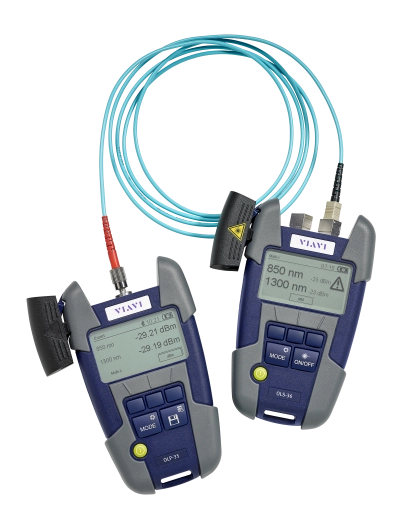All You Required to Know Concerning Robotic Vision and Its Applications in Advanced Optical Dimension Systems
Robotic vision stands for a considerable advancement in the crossway of computer vision, expert system, and machine knowing. This modern technology improves the precision of optical measurement systems, enabling real-time information evaluation and enhanced top quality control. Its influence extends multiple industries, from producing to medical care. Nonetheless, the progressing landscape of robotic vision elevates questions concerning future capacities and applications (optical fibre diameter analyser). What advancements exist ahead in this transformative area?
Understanding Robotic Vision: Key Concepts and Technologies
Robotic vision incorporates the innovations and methods that enable equipments to interpret and comprehend aesthetic info from their atmosphere. This area incorporates aspects of computer vision, expert system, and equipment learning to assist in computerized decision-making based on visual data. Trick principles consist of picture handling, which includes the enhancement and evaluation of images to extract meaningful attributes, and item recognition, which allows equipments to determine and categorize things within a scene.

The Assimilation of Robotic Vision With Optical Measurement Equipments
As industries increasingly demand precision and effectiveness, the integration of robot vision with optical dimension systems has emerged as a transformative method. This synergy permits robots to regard and interpret their surroundings, improving the capacity of optical measurement systems to examine and evaluate items with unrivaled accuracy. By gearing up optical sensing units with advanced imaging technologies, robot vision allows real-time information collection and handling, facilitating instant modifications to dimension specifications.
The mix equips automated systems to discover variants in dimensions, surface area top quality, and positioning, which are critical in top quality control procedures. Enhanced formulas, such as artificial intelligence, further boost this combination by improving the systems' capacity to adapt to different atmospheres and situations. The integration not only improves dimension procedures yet additionally minimizes errors, making sure that products meet rigorous industry criteria, therefore strengthening the duty of robotic vision in the future of optical measurement systems.
Applications of Robotic Vision in Manufacturing
In contemporary production atmospheres, making use of vision systems has revolutionized production processes by enabling machines to perform jobs with amazing accuracy and rate. Robotic vision systems are increasingly employed for quality assurance, where they evaluate items for problems and guarantee adherence to specs. These systems use video cameras and advanced formulas to analyze items in real-time, considerably minimizing the risk of human mistake.
In addition, robot vision promotes automation in production line, permitting robots to precisely recognize elements and construct them with minimal downtime. This modern technology also enhances supply monitoring, as vision systems can check stock levels and spot discrepancies, assuring a seamless supply chain.
Robotic vision aids in the execution of wise manufacturing facilities, where data from vision systems can be incorporated with other innovations to optimize process (optical fibre diameter analyser). Generally, the applications of robot vision in producing show its important function in improving efficiency, top quality, and efficiency throughout numerous industries
Robotic Vision in Health Care: Reinventing Individual Care

In rehabilitation, robot vision aids in checking client development and customizing therapy sessions to specific needs. It supports physician by automating jobs such as data collection and person surveillance, allowing for even more time to concentrate on straight individual interaction. Furthermore, robot vision improves telemedicine by making it possible click to find out more for remote medical diagnosis and digital appointments, linking the void in between people and doctor. On the whole, the application of robotic vision in health care is reinventing person care, resulting in boosted results, effectiveness, and person fulfillment.
Future Patterns and Growths in Robotic Vision Modern Technology
The quick development of robotic vision innovation guarantees to additionally enhance its applications throughout different markets, consisting of health care. Future fads suggest a considerable change towards incorporating expert system and artificial intelligence, enabling systems to discover from huge datasets and enhance accuracy gradually. Boosted sensor modern technologies and deep understanding algorithms are expected to improve things acknowledgment capabilities, enabling robots to translate intricate atmospheres a lot more properly.

The integration of augmented fact (AR) with robotic vision will likely transform how robots assist in medical procedures and diagnostics. This synergy will assist in real-time data visualization, improving decision-making procedures. Furthermore, miniaturization of parts will certainly result in even more small and functional robot vision systems appropriate for a selection of jobs. As these improvements unravel, markets will witness increased automation and performance, solidifying robot vision as a foundation of innovative technical remedies.
Often Asked Inquiries
What Are the Main Elements of a Robotic Vision System?
The major elements of a robotic vision system consist of cams for photo capture, processors for information visit homepage evaluation, formulas for analysis, and actuators for movement. Together, these components enable robots to perceive and interact with their atmosphere successfully.
How Does Robotic Vision Improve Precision in Measurements?
Robotic vision enhances measurement accuracy by making use of innovative imaging modern technologies, enabling accurate things detection and spatial evaluation. This capability lowers human mistake, boosts repeatability, and enables real-time modifications, eventually boosting general measurement reliability and effectiveness.
What Industries Benefit A Lot Of From Robotic Vision Modern Technology?
Different industries benefit greatly from robot vision technology, including production, health care, agriculture, and logistics. These markets use boosted accuracy, efficiency, and automation, resulting in boosted efficiency and lowered functional prices in their corresponding processes.
Can Robotic Vision Equipments Operate In Low-Light Conditions?
Robotic vision systems can without a doubt work in low-light conditions, making use of advanced sensors and formulas to improve picture clarity. This capability allows them to execute effectively in different settings, including commercial and monitoring applications, despite having minimal lighting.
What Are the Costs Linked With Executing Robotic Vision?
The prices connected with implementing robot vision vary considerably, influenced by components such as cameras, software application, and integration. Additional costs consist of maintenance, training employees, and potential upgrades to existing systems, which can accumulate with time.